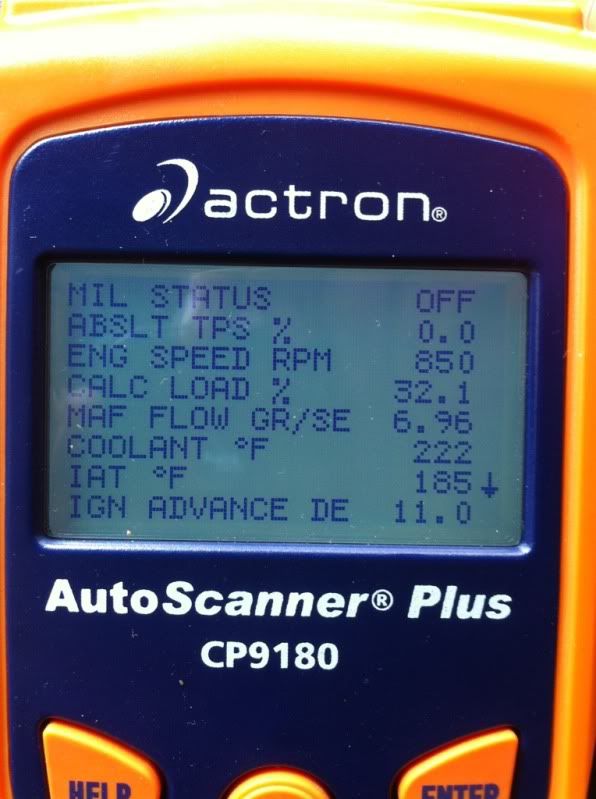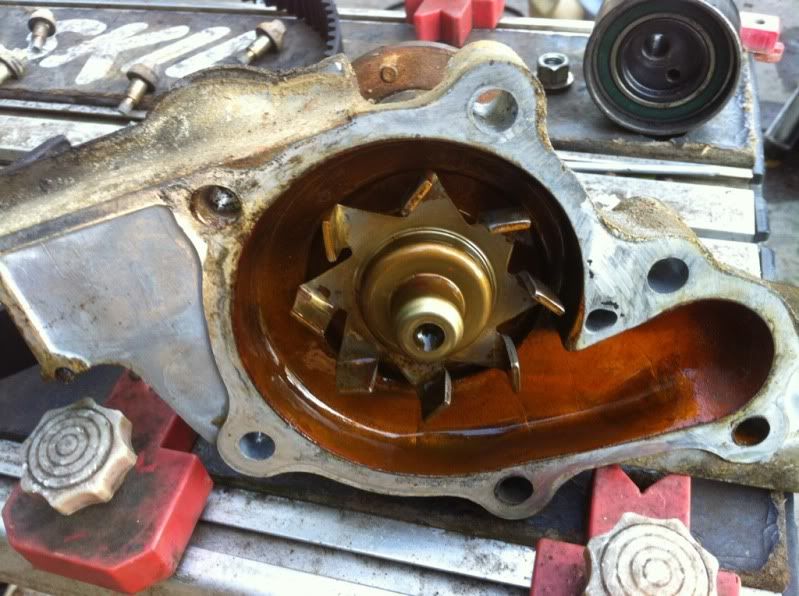I have a 2002 Nissan Frontier with a non supercharged 3.3L v6. The truck is a crew cab, long bed and 4x4. I have had this truck since I bought it used in 2004 with 26k miles. The truck now has 196k miles and I have done a little modifying to make it a bit more off road capable.
I have done all the work to the truck myself, until last fall when I finally broke down and took it to a dealer, who was not able to find my problem, but I will get to that…
First of all, the truck has steel bumpers, a winch, a tool box, onboard air system and large tires, all of which make the little 3.3L work hard. However, for three years since I quit making modifications, the truck ran perfectly cool and the temp needle never once went above the normal operating position, even through thick sand at the beach, mountain trails and towing heavy trailers, until last summer.
Late last summer, on 90+ degree days, I noticed the temp needle would start riding above normal when I had the AC on. It didnt matter if I was on the highway, the city streets or idling in the driveway. When I turned off the AC the needle went back to normal. This started happening occasionally at first (once every 2 weeks) then towards fall it started happening more frequently, almost every 90 degree day. Soon after I noticed the problem, it would happen even with the AC off, but not get quite so hot.
After a few weeks of this, I started chasing the problem. I replaced the radiator cap, the thermostat (tested the old one and tested the new one before installing,) I took the radiator to a rad shop and had it boiled and flow tested, I replaced both coolant temp sensors, and then finally the water pump. When none of those repairs made a difference I built new radiator fan shrouds and that made no difference.
At this point I was starting to get discouraged so I borrowed a scan tool from a friend and drove around for a few weeks with it plugged in. I was reading live temperature readings of the coolant and verified that the gauge was working correctly. The truck ran about 200 degrees with the AC off most of the time, then, when I turned the AC on, no matter if I was sitting in park or driving on the highway, the temp would steadily climb until it got to 222 degrees and I would shut off the truck, at that point the needle was near the danger zone and according to several nissan dealership, the highest normal operating temp is 204, but it should stay around 195. At 205 degrees, the needle would start to move above the normal position, so the gauge seems to be fine.
As summer turned into fall, the truck started running cooler as the days began to drop into the 70’s. I finally got fed up with chasing my tail and took the truck to a dealer with my main concern being a blown head gasket or cracked head. The dealership inspected the head and tested the coolant for hydrocarbons and said that the head and gasket are not the issue. They advised that the only other thing it could be is my fan clutch.
After that dealership visit, the days were cool so I drove the truck all winter without changing the fan clutch. Then, 2 weeks ago, on a 70 degree day, I hooked up my truck to an empty trailer (maybe 1000lbs) and towed it 15 miles. When towing up hill with the AC on, the temp needle started moving.
I immediately went to napa and replaced my fan clutch. Confident that was the issue, I drove the truck to the mountains for a camping trip last weekend. While climbing the hills at 40mph and about 2500 rpm, the temp needle climbed to the near danger zone.
That brings us to today. I have exhausted myself trying to fix this problem, spent lots of money on replacement parts that made no difference and I do not know what else to do. I have posted this issue on numerous automotive forums with no new ideas. At this point, I can only imagine that there is still a head/head gasket issue and the dealership missed it, but my truck has not thrown any lean codes. I took the truck back to a dealership which is where it is now, and they can not find any issues and recommend they start with a coolant flush, which I declined because I have changed the coolant half a dozen times in the last six months. The truck is still sitting at the dealership and I don’t know where to go from here.
Any ideas or suggestions would GREATLY be appreciated!


